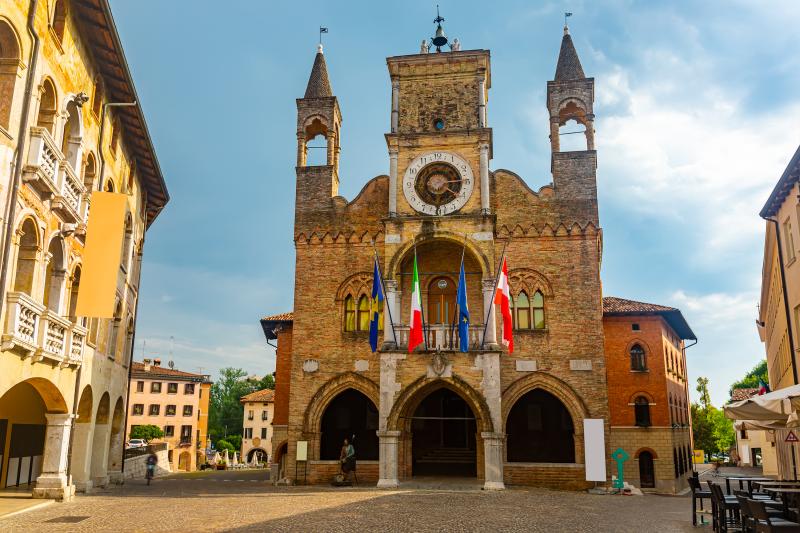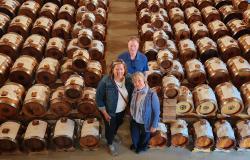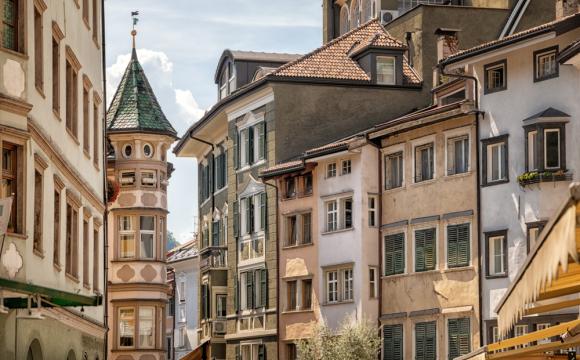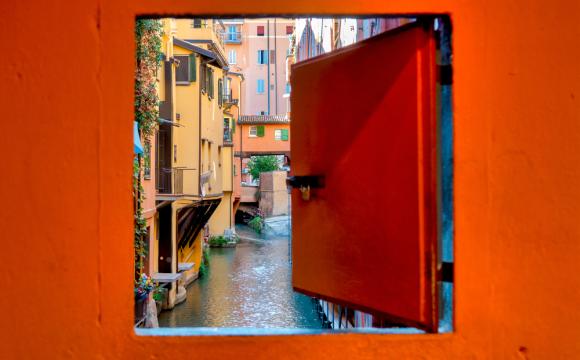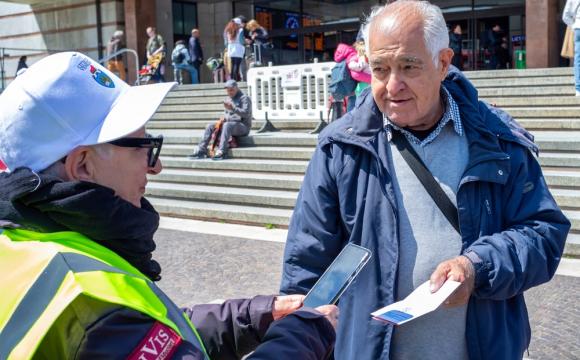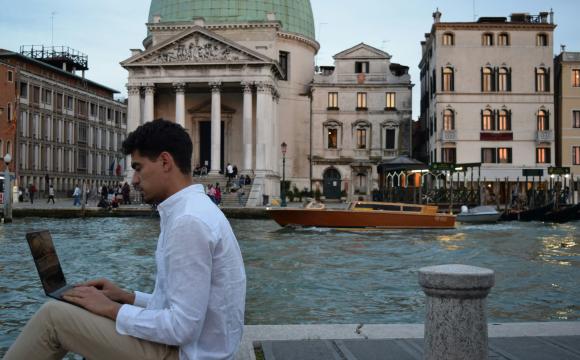Editor's note: Pordenone was just declared Italian Capital of Culture for 2027 on March 12, 2025. To celebrate, we are revisiting this article on the campaign, which offers a special preview of what you'll find in the full Friuli Venezia Giulia issue of Bellissimo, our digital magazine that all Premium Members receive quarterly.
The article appears below as it originally ran.
“I’m in love with your city. Friuli is a great place to stay!”
“Thanks. But don’t you ever call this place Friuli again.”
Oof. In Trieste, the capital of Friuli Venezia Giulia, I’ve witnessed some version of this exchange between visitors and locals many times. This is usually the moment when shock washes over the innocent visitor, who’s often sipping an Aperol Spritz with the stunning Piazza d’Italia as their backdrop. What follows is a request for clarification from the local, but the standard response is brief: “Trieste is not Friuli. Trieste is Trieste. And that’s it.”
Similar patterns play out in Udine, where locals joke about the fact that “Trieste’s problem is its citizens.” It’s a long-running, slow-to-die rivalry — rooted in politics, history and, of course, soccer.
There’s a name for the phenomenon, which isn’t unique to Friuli Venezia Giulia; throughout the country, it’s more ubiquitous than pizza. Let me introduce you to campanilismo. The term comes from campanile (meaning the bell tower of the local parish church), and refers to a provincial attachment to one’s birthplace.
It’s less about loving affection and more about short-sighted superiority complexes. Italy’s geographical and cultural fragmentation means there’s a great deal of friction between provinces, cities and even neighborhoods. But in Pordenone, a small Friulian city and administrative area campaigning for Italian Capital of Culture status in 2027, local pompousness is out and team-player attitudes are in.
Change begins with the unexpected

Picture the industrious yet isolated region of Friuli Venezia Giulia, tucked between sea and mountains in the easternmost corner of Italy; then picture its bordering land, the relatively forward-looking Veneto. Blend them and you have Pordenone — where, after a long series of dialogues with institutions, town halls and listening sessions with citizens, a local committee is competing for €1 million in coveted national funding to carry out more than 50 projects aimed at bolstering cultural tourism and improving quality of life for citizens; “1000 days of culture” is the city’s promise to visitors and residents. As one of 17 candidates for the title, Pordenone is campaigning under the slogan Pordenone 2027. City that Surprises. It alludes to the fact that Pordenone and the surrounding areas are known for industry and not widely regarded as “art cities” or travel destinations, despite their many offerings, which span film festivals to centuries-strong mosaic traditions.
Mosaics and more in Pordenone

Pordenone’s projects are all rooted in regional traditions, but the standout programs are those that thoughtfully merge past and present. Spilimbergo, a small municipality of just under 12,000 people about a 30-minute drive from Pordenone proper, is set to enact one of the most visually memorable projects. Surface: From Mosaics to Street Art marries urban renewal with contemporary street art and centuries-old artistic and craft traditions, taking inspiration from similar projects that have run in Ljubljana, Berlin and Florence. Scholars and artists of the Mosaic School of Spilimbergo will construct three open-air mosaics, working alongside young Italian street artists like Alice Pasquini and Pixel Pancho.
Back in downtown Pordenone, meanwhile, in a setting dominated by ancient arts and archaeological sites, the International Museum of Comic Art is the first of its kind in Italy. It hosts a vast collection of comics and graphic novels, and during Pordenone’s potential year as Capital of Culture, it will host Italy’s first exhibition on the renowned manga animator and illustrator Hayao Miyazaki.
Every concept or art piece brought to life for Pordenone’s banner year will be bound to stay. The historical Piazza della Motta, for example, has been upgraded to open-air “urban theatre” and will host concerts and performances. Pordenone’s artistic inclinations may not be well known, but they’ve got deep roots: Ancient Venetian merchants are known to have referred to this center as the “painted city,” due to the frescoed palaces along what is today Corso Vittorio Emanuele II. Walking tours organized by the regional tourist board, PromoTurismo FVG, are set to be expanded during the Capital year and remain long-term.
Friuli’s rising star
The Italian Capital of Culture initiative began in 2014 under then-Culture Minister Dario Franceschini, inspired by the European Capital of Culture program launched nearly three decades prior. Campaigns for these titles are now commonplace and can feel indistinguishable from each other. But Friulian candidates have stood out for their teamwork; Pordenone has taken an inclusive approach involving all of the towns in the province. It’s a smaller-scale example of the attitude adopted by Pordenone’s Friulian neighbor Gorizia and Nova Gorica (in Slovenia, former Yugoslavian territory); relations between the two were once hostile, but in 2025 they will share the European Capital of Culture title, united under an unprecedented theme, “Borderless.”
Attention on Friuli Venezia Giulia is set to increase whether Pordenone wins or not. But the region isn’t after its 15 minutes; it’s seeking to build its future.
“I think Pordenone's cultural scene will benefit from this collective effort for years to come, even if we don’t get the title,” resident Fiorenza Spuria, a graphic design teacher and translator, told me on a recent visit. “Our beguiling borghi will be put in the spotlight, too.”
What I’ve observed in my interactions with locals in Pordenone is a willingness to weave new networks; there’s a conspicuous absence of competitive feeling among these borghi. There’s no need for the fairytale-like waterfalls of Polcenigo to overshadow Poffabro’s rural soul, or for Sacile’s Venetian elegance to outshine the medieval atmosphere of Valvasone’s alleys.
Beyond Friuli’s borders, Pordenone has even given its endorsement to L’Aquila, Italian Capital of Culture 2026, in Abruzzo, taking the cause of cooperation outside the region. The mutual support is promising and may carry wider implications for Italian tourism as more communities move toward collaboration and away from competition — rejecting the need to prove who has the best dishes, the sparkliest seaside or the finest art treasures. In such a fragmented country, creating community momentum around culture is tougher than it seems, and Pordenone’s commitment to building paths between “bell towers” offers a blueprint for the future.
Get more Friuli Venezia Giulia intel with Bellissimo
To read the full Friuli Venezia Giulia issue of Bellissimo, head to our online shop.
*Premium Members will need to log in to download. If you don't have Premium, you can sign up here. Single issues of Bellissimo are also available for purchase.
